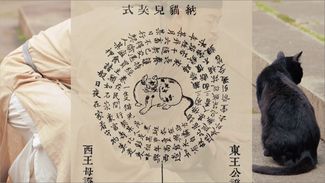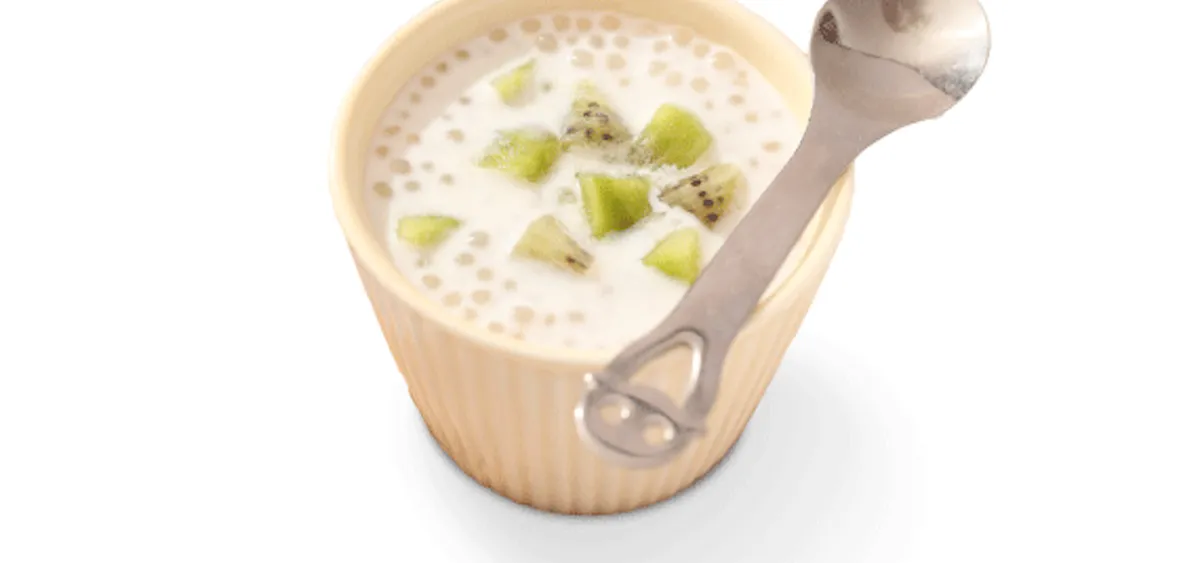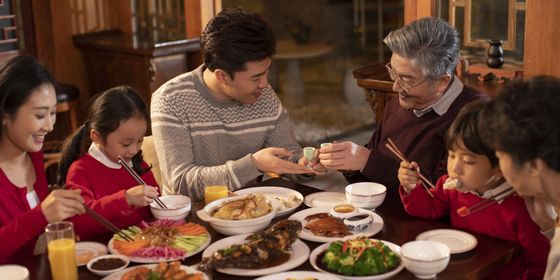Sail through the summer with this silky white treat
Don’t be deceived by coconut sago’s pure white broth or playful pearls of chewy goodness—behind its innocent appearance lurks a history both ancient and dark, one that tells an epic tale of daring explorations, court intrigues and mercantile migrations.
Coconut sago (椰汁西米露 yēzhī ximǐlù) is a sweet, silky white porridge made from coconut milk and sago, a kind of palm starch shaped into pearls that resemble tapioca balls. Served hot or cold, it’s a refreshingly light way to end a meal. The dessert can be found all over the country—but the origins aren’t Chinese.
In the early 1400’s Zheng He (郑和), the revered fleet admiral, diplomat and explorer (not to mention eunuch) began leading his landmark voyages to Southeast Asia, South Asia, the Middle East and East Africa. (We’ve further covered his exploits in our Adventure Issue, which you can buy in our store.)

Spearheaded by the Yongle Emperor, these expeditions would prove instrumental in spreading the influence of the Ming Dynasty (1368-1644) to remote corners of the globe. The voyages also helped bolster a vast network of cultural and commercial routes to southeastern Asia and beyond, all the way to the eastern shores of Africa.
As a result of Zheng He’s voyages, more and more Chinese began settling in the Malacca peninsula (now part of Malaysia). Some Malay texts even claim that in 1459 the emperor sent Ming princess Han Libao to be the wife of a Malay sultan as a token of appreciation for the sultan’s previous tribute to the Ming court.
Most of the settlers were young men who began intermarrying with the local women. Chinese and Malay traditions began to fuse, sowing the seeds of what would eventually become the unique Peranakan (土生华人 tǔshēng huárén, also known as Baba-Nyonya or Straits Chinese) culture.
Now an established part of Malaysian culinary traditions, Peranakan cuisine makes heavy use of coconut milk and sago, two of the main food staples of Borneo, Malaysia and Indonesia. One of the most popular Peranakan desserts is called gula melaka sago, a pudding made from coconut milk, sago pearls and palm sugar. Sound familiar?
Coconut sago began spreading throughout the land. These days, the dessert is popular in Southern China, where in the winter, people chow down on a Cantonese version served hot with hearty extras like taro root. For a cooler variety, closer to its Malaysian roots, coconut sago is served cool or tepid, with chunks of mango and other tropical fruit.Now that summer is upon us, there are more reasons to eat coconut sago than its illustrious past or mellow-sweet flavor. As a Malaysian friend recently told me, coconut milk is great for cooling down because its sugar-rich composition makes it extremely hydrating, while the refreshing taste is great for fighting the heat. “Summer is the best time to eat it,” agrees cook Zhou Su E. “It’s creamy, sweet, and silky, and you can add whatever fruit you want to adjust it to your own taste.” Best of all for the ladies, Zhou says, is papaya. “Papaya is a good fruit for women,” she says. “It’s full of special vitamins for them, and they say it’s good for beauty.”

Coconut is also packed with healthy oils that are great for moisturizing skin and hair. So the next time summer heat’s got you down, whip up a bowl of coconut sago for a refreshing and nourishing treat, with a little history on the side.
Recipe
100g of small or big sago grains
西米 ximǐ
1 can of coconut cream
椰浆 yējiāng
100g of fresh milk
鲜牛奶 xiān niúnǎi
150g of crystallized or refined white sugar
冰糖 bīngtáng/白砂糖 báishātáng
900ml of water
水 shuǐ
Instructions
1. Bring the water to boil in pot, reduce heat and add sago grains
2.Boil sago for approximately five minutes, stir to prevent sticking
3. Remove sago and put in cool water
4. Add more water to the pot, bring back to boil and return the cooled sago grains. Boil, continuing to stir, until the sago turns translucent (or pale white). Turn off the heat, cover and simmer for five minutes.
5. Return boiled sago to cold water. The grains should look like little pearls.
6. Pour coconut cream and milk into a pot and bring to boil. Add sugar according to taste.
7. Put sago pearls in two bowls and add boiled coconut milk. Let cool and refrigerate for one hour, or to desired temperature.
8. Add fruit as preferred
For another sweet Chinese treat that’ll keep you cool too? Try Bao Bing-a-ling.












